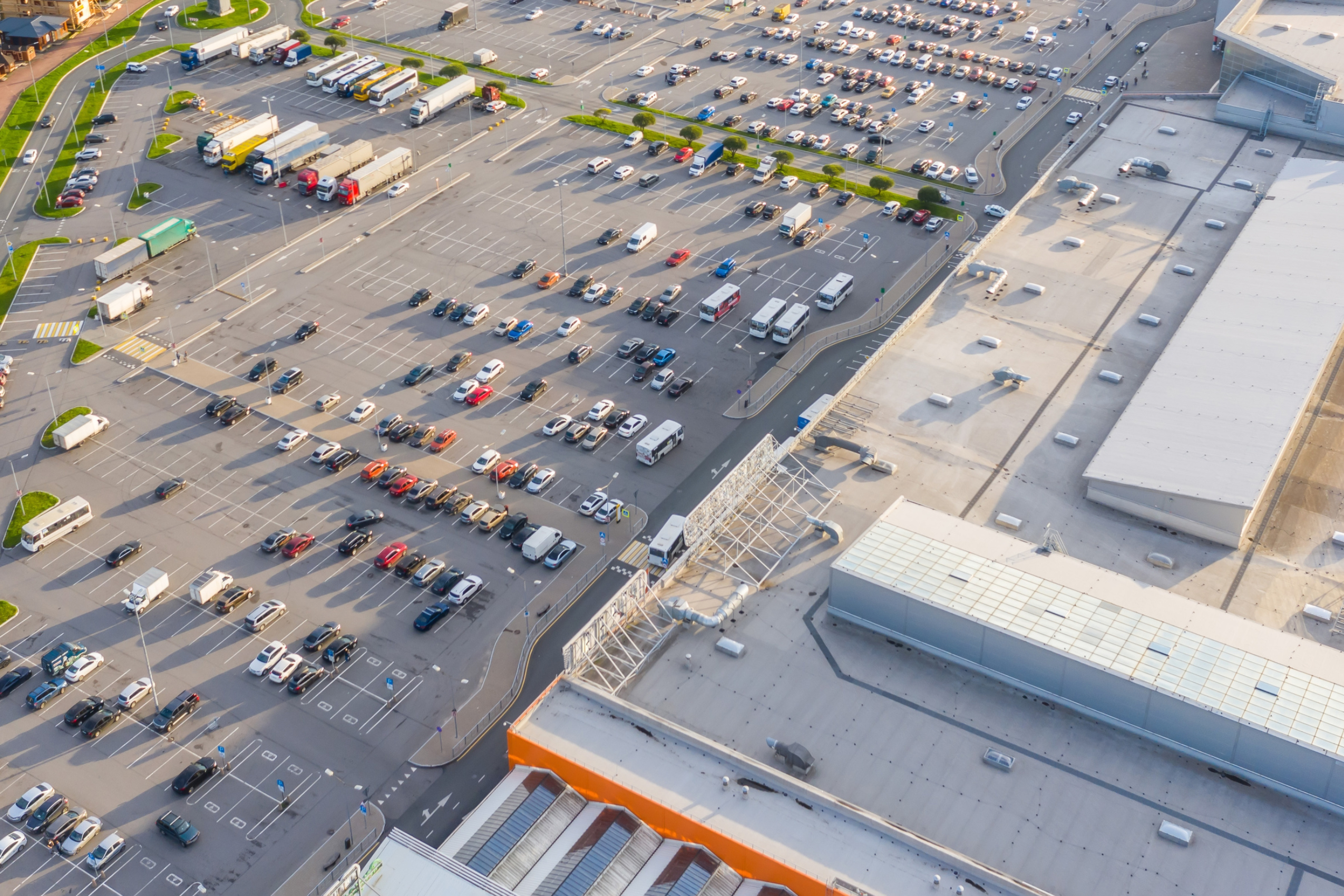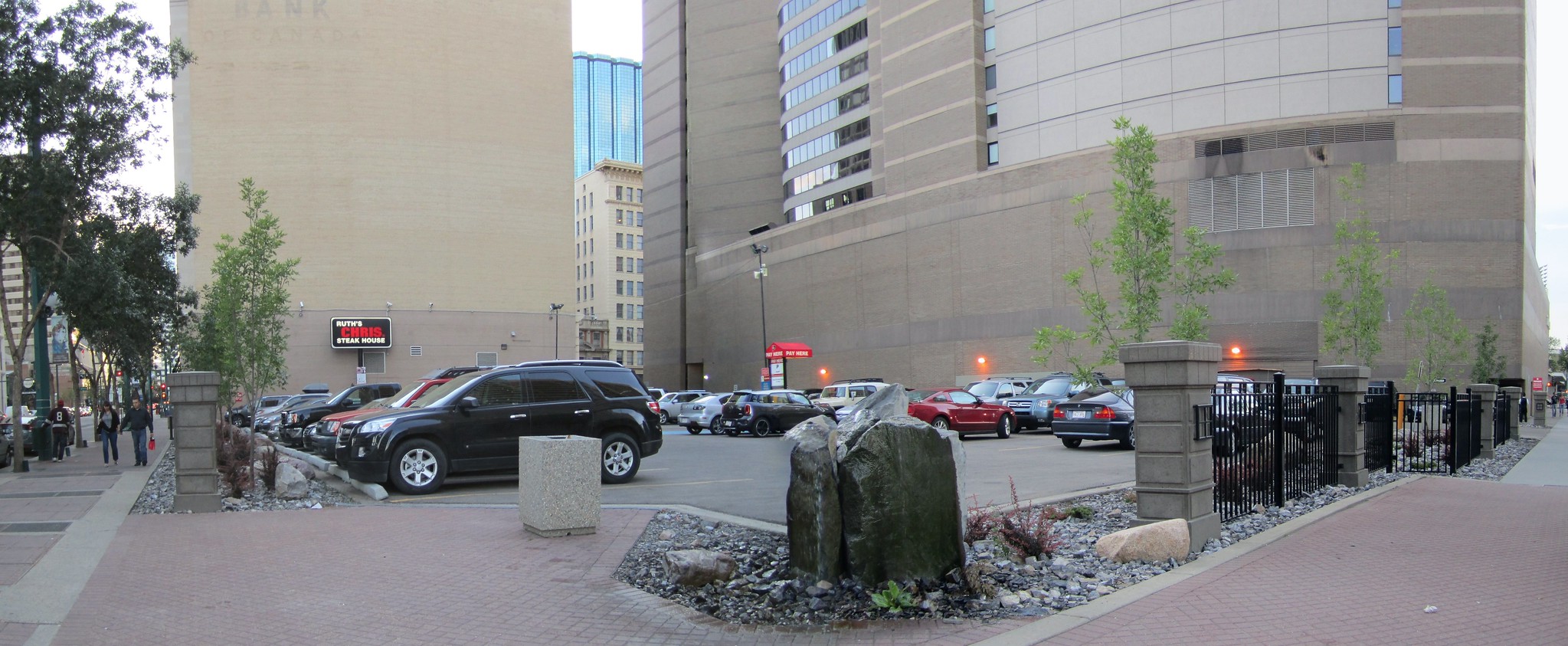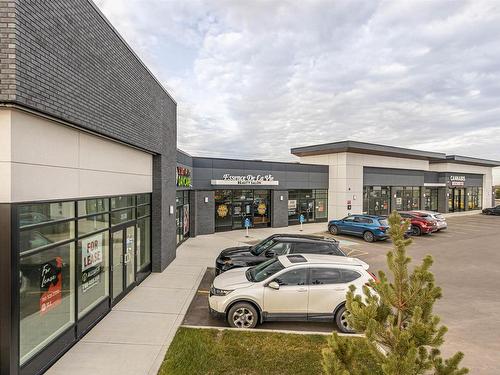Parking lots are a necessary part of any commercial or residential property. They provide a convenient place for customers, employees, and residents to park their vehicles. However, with the increase in paved surfaces, proper parking lot drainage has become a major concern. Without proper drainage, parking lots can become flooded, causing damage to vehicles and creating safety hazards such as sinkholes. In this article, we will discuss effective strategies for parking lot drainage to ensure your lot stays safe and functional.
Why is Parking Lot Drainage Important?
Parking lot drainage is essential for several reasons:
- Prevents flooding: Proper drainage prevents water from pooling on the surface of the parking lot, which can cause damage to vehicles and reduce the lifecycle of the parking lot.
- Protects the pavement: Standing water can weaken the pavement, leading to cracks and potholes. Standing water can create instability and ultimately cause the parking lot to eventually fail.
- Maintains a clean and attractive appearance: A well-drained parking lot is not only functional but also visually appealing.
Factors to Consider for Parking Lot Drainage Design
When designing a parking lot drainage system, there are several factors to consider:
- Slope: The slope of the parking lot is crucial for proper drainage. A minimum slope of 1% for asphalt/concrete and 2% for gravel is recommended to ensure water flows towards the designated drainage areas.
- Surface material: The type of surface material used for the parking lot can affect drainage. Impermeable surfaces, such as asphalt, will require a more complex drainage system compared to permeable surfaces like gravel.
- Climate: The amount of rainfall and snowfall in your area will also impact the design of your parking lot drainage system. Areas with heavy rainfall will require a more robust drainage system to handle the excess water.
- Local regulations: It is essential to check with your local municipality for any regulations or guidelines regarding parking lot drainage. This will ensure your drainage system meets all necessary requirements.

Parking Lot located Edmonton, Alberta
Types of Parking Lot Drainage Systems
There are several types of parking lot drainage systems to consider, depending on the size and layout of your lot:
- Surface drainage: This is the most common type of drainage system, where water is directed towards curb cuts and outlets along the perimeter of the parking lot.
- Underground drainage: This is where water is directed towards designated catch basins or inlets. These catch basins are connected to underground pipes that carry the water away from the parking lot.
- Trench drains: Trench drains are long, narrow drains that are installed at the edge of the parking lot to collect water. They are typically used in areas with heavy rainfall or where surface drainage is not feasible.
- Permeable pavement: Permeable pavement is a type of surface material that allows water to pass through it, reducing the need for a complex drainage system. This is a great option for areas with heavy rainfall or where traditional drainage systems are not feasible. Alberta’s climate is unfortunately not conducive to permeable pavement. Permeable pavement would be used in cities like Vancouver, B.C. with milder temperatures and plenty of rainfall.
Parking Lot Drainage Grates
Parking lot drainage grates are an essential component of any parking lot drainage system. They are designed to collect and direct water towards the designated drainage areas. Here are some factors to consider when choosing parking lot drainage grates:
- Material: Parking lot drainage grates are typically made of cast iron, steel, or plastic. Cast iron is the most durable option, but it can be more expensive. Steel is a more affordable option, but it may not be as durable as cast iron. Plastic grates are the most affordable option, but they may not be suitable for heavy traffic areas.
- Load rating: The load rating of a grate refers to the amount of weight it can withstand. It is essential to choose a grate with a load rating that can handle the weight of the vehicles that will be using the parking lot.
- Grate design: Parking lot drainage grates come in various designs, including slotted, perforated, and mesh. The design you choose will depend on the amount of water you need to drain and the type of debris that may be present in the parking lot.

Best Practices for Parking Lot Drainage Maintenance
Proper maintenance is crucial for the longevity and effectiveness of your parking lot drainage system. Here are some best practices to follow:
- Regular cleaning: Debris, such as leaves and trash, can clog drainage grates and pipes, leading to water backup and potential flooding. Regularly cleaning the grates and removing any debris will ensure proper drainage.
- Inspect for damage: Regularly inspecting your parking lot for any damage, such as cracks or potholes, can prevent water from pooling and causing further damage. Repair any damage as soon as possible to maintain the integrity of your parking lot.
- Clear snow and ice: It is essential to clear snow and ice from the parking lot to prevent water from pooling and causing damage.

Parking Lot located downtown, Edmonton
Innovative Solutions for Parking Lot Drainage
With advancements in technology, there are now innovative solutions available for parking lot drainage. These solutions not only improve drainage but also provide additional benefits, such as sustainability and cost savings.
- Rain gardens and bioswales: Rain gardens and bioswales are shallow depressions in the ground that are planted with native vegetation. They are designed to collect and absorb rainwater, reducing the amount of runoff and filtering pollutants.
- Permeable pavement: As mentioned earlier, permeable pavement is a great option for parking lots in milder climates with heavy rainfall. It not only reduces the need for a complex drainage system but also helps filter pollutants and reduce heat buildup.
- Dry ponds and stormwater ponds. Adjacent low-lying areas designed to provide drainage and absorb and filter runoff from the parking lot.

City of Edmonton Manhole cover
The Path Forward
Proper parking lot drainage is crucial for the safety and functionality of your parking lot. By considering factors such as slope, surface material, and climate, and choosing the right drainage system and grates, you can ensure you prolong the lifecycle of your parking lot. Regular maintenance and exploring innovative solutions can also help improve drainage and provide additional benefits. With these strategies in place, you can have a well-drained and visually appealing parking lot for years to come. If you are looking for experienced civil engineering company to guide you through development projects in Edmonton and across Alberta, be sure to engage with Bolson Engineering and Environmental Services. We will be happy to consult with you as your trusted engineering partner.

